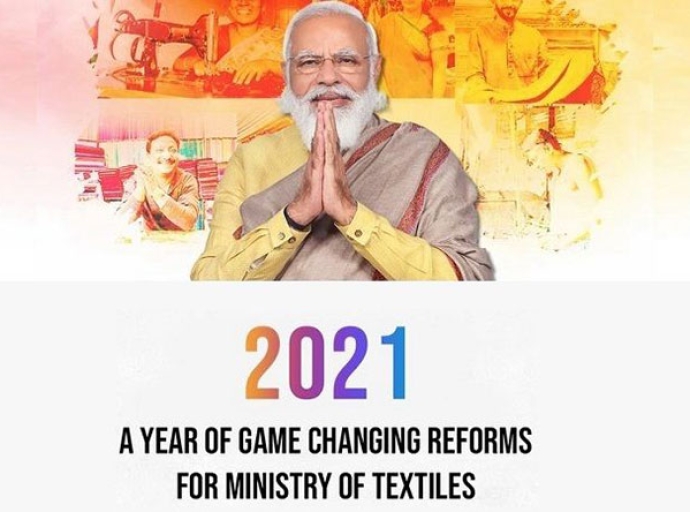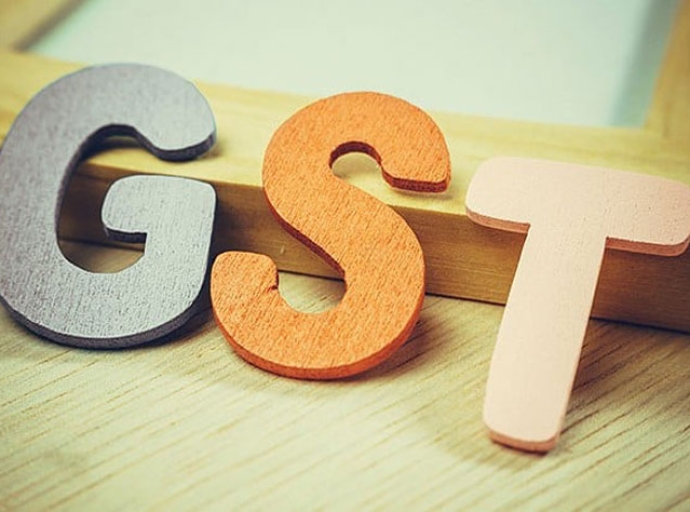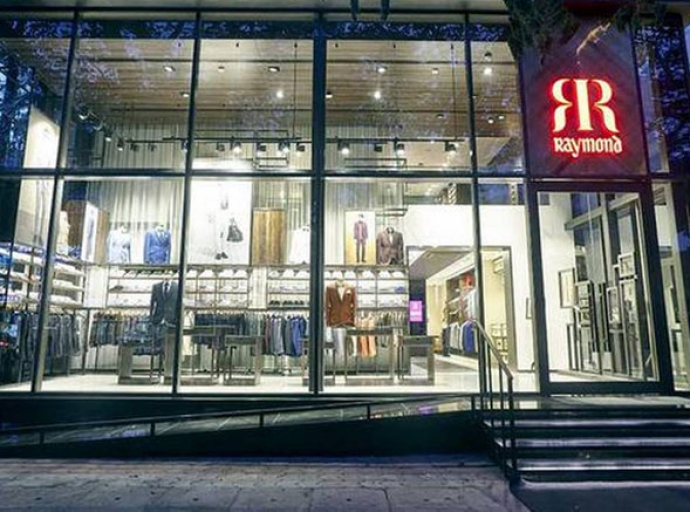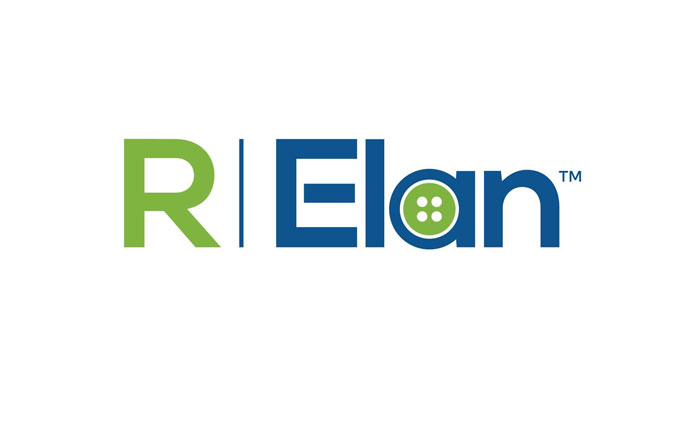28 December 2021, Mumbai:
India has the unique advantage of the entire value chain for textile production present within the country vis-à-vis other competing nations which have to import fibre, yarn, and fabric to meet their requirement for garment production. It has a large market, which is growing rapidly with affordable manpower.
The domestic textile and apparel production is approx US$ 140 Bn including US$ 40 Bn of Textiles and Apparel export. The textile and apparel industry contributed 2% in the overall GDP of India in 2019 and 11% to total manufacturing in GVA.
Availability of almost all types of raw materials, the existence of total value chain, young demography of India, the entrepreneurial mindset of industry leaders, continuous support of Government, technology up-gradation, focus on innovation and strong presence of support industries will help this sector grow at a healthy pace in a coming decade.
Widely referred to as a change agent owing to its transformative powers, this industry alone has the capacity to generate around 70 jobs in garmenting and an average of 30 jobs overall for every INR 1 crore (USD 132,426) invested as compared to 12 jobs created on an average in other industries.
With direct and indirect employment of close to 105 million people, this industry is the second-largest employment generator in the country, next only to agriculture. More significantly, women constitute 70% of the workforce in garment manufacturing and about 73% in Handloom.
The growth of India as a manufacturing hub for textiles will depend on the attractiveness of the domestic market and on investments in high-end textile machinery and products in emerging areas like technical textiles, Man-Made Fiber (MMF).
A hallmark achievement of the Ministry includes, India has establishing a Rs 7000 crores PPE industry in a short span of just three months in the post-COVID situation and becoming the second-largest producer of PPEs.
Recent key initiatives of the Ministry during the year are as under:
PM MITRA PARKS: Government has approved the Setting up of 7 Pradhan Mantri Mega Integrated Textile Region and Apparel (MITRA) Parks with a total outlay of Rs. 4445 Crores in a period of 5 years.
World-class industrial infrastructure would attract cutting edge technology/scale and FDI / local investment in the sector. PM MITRA Park will encompass all ‘5F’ components: Farm to Fibre; Fibre to Factory; Factory to Fashion; Fashion to Foreign. PM MITRA Park is envisaged to be located at sites that have inherent strength for Textile Industry to flourish.
PM MITRA Park will offer the opportunity to create an Integrated Textiles Value Chain right from spinning, weaving, processing/dyeing and printing to garment manufacturing, etc. at one location and will reduce logistics cost of the Industry. It is intended to generate around 1 Lakh direct and 2lakhindirect employment per park.
PRODUCTION LINKED INCENTIVE (PLI) SCHEME FOR TEXTILES:
Production Linked Incentive (PLI) Scheme for Textiles is specially focused at high value and expanding MMF and Technical Textiles segments of Textiles Value Chain.
Incentives worth Rs. 10,683crore will be provided over five years for manufacturing notified products of MMF Apparel, MMF Fabrics, and segments/products of Technical Textiles in India.
This will give a major push to the growing high-value MMF segment which will complement the efforts of the cotton and other natural fiber-based textiles industry in generating new opportunities for employment and trade. It will help create 50-60 global champions of exports.
RoSCTL scheme and Duty Structure: Government has approved the continuation of the RoSCTL scheme up to March 2024 to boost export competitiveness of Indian apparel and made-ups. The Government has notified uniform goods and services tax rate at 12 % on MMF, MMF yarn, MMF fabrics, and apparel that has addressed the inverted tax structure in the MMF textile value chain.
The changed rates will come into effect from 1st January 2022. This will help the MMF segment grow and emerge as a big job provider in the country.
AMENDED TECHNOLOGY UPGRADATION FUND SCHEME (ATUFS):
Technology Upgradation Fund Scheme (TUFS) is a credit-linked subsidy scheme intended for modernization and technology up-gradation of the Indian textile industry, promoting ease of doing business, generating employment, and promoting exports. The ongoing ATUFS with an allocation of Rs 5151cr has been implemented with a focus on facilitating and providing support to MSMEs.
TECHNICAL TEXTILES: The Technical Textiles segment is a new age textile, whose application in several sectors of the economy, including infrastructure, water, health and hygiene, defense, security, automobiles, aviation will improve the efficiencies in those sectors of the economy. The government has also launched a National Technical Textiles Mission for promoting R&D efforts in that sector.
SAMARTH (SKILL DEVELOPMENT & CAPACITY BUILDING): Samarth is a placement-oriented programme targeting skill development of unemployed youth in the value chain of textiles for gainful employment in organized sector and skill up-gradation of weavers & artisans in the traditional sector.
So far, a total of 71 textile manufacturers, 10 industry associations, 13 state government agencies, and 4 sectoral organizations have been onboarded under the scheme with an allocated target of 3.45 lakh beneficiaries, after due process of empanelment.
NATURAL FIBERS: India enjoys a predominant position in the availability of natural fibers of textiles.
Silk: India’s traditional and culture-bound domestic market and an amazing diversity of silk garments help the country to achieve a leading position in the silk industry. India is the second-largest producer of silk next to China.
It contributes about 32% of global silk production. The total size of the Indian silk industry is Rs.75000.00 crore(estimated). The Government has taken a number of steps for the promotion of investment, production, exports, and employment generation in the sericulture sector across the country.
The central sector scheme “Silk Samagra” provides R & D/ Seed support, technical and financial assistance for enhancing the quality and production of silk.
The main focus of the scheme is to make India Atma nirbhar in the production of international grade bivoltine silk and scale up the Automatic Reeling Machine. Brand “Indian Silk” is promoted through Product Development & Diversification to address the global market need.
Cotton: CCI could procure around 26 lakh bales under MSP Operations and about 6 lakh cotton farmers were benefitted by the disbursement of Rs.7600 crores directly into their bank account.
Jute: Jute-ICARE (Improved Cultivation and Advanced Retting Exercise) scheme has been implemented for the improvement of quality and yield of raw jute production. Jute Raw Material Bank (JRMB) Scheme is for supplying jute raw materials at Mill Gate Price to MSME JDP units for production of jute diversified products,
Wool: Ministry of Textiles has approved rationalization and continuance of the Integrated Wool Development Programme (IWDP) from 2021-22 to 2025-26 with a total financial allocation of Rs. 126 Crore. ‘Wool Processing Scheme’ is for promotion of woolen industry.
TRADITIONAL LIVELIHOOD SECTOR OF TEXTILES - Handlooms and Handicrafts:
Ministry of Textiles is implementing schemes for the development of handlooms, the welfare of weavers, and for revival and promotion of the handloom industry across the country.
To promote the marketing of handloom products, Handloom Export Promotion Council (HEPC) has been organizing International Fairs and domestic marketing events for the weavers.
Linking Textiles with Tourism through Crafts Tourism Village is a modern-day concept wherein craft promotion and tourism are being taken up simultaneously. 13 crafts villages have already been identified.
Focusing on Direct market Access to Weavers/Artisans: To provide a direct marketing platform to the handicraft artisans/weavers, the Ministry of Textiles is developing an e-commerce platform through digital India Corporation, Ministry of Electronics, and Information Technology.
In the first phase, the artisans/weavers from 205 handicrafts/handlooms clusters are being selected throughout the country for uploading the handicrafts/handlooms products on the portal.
Further, the artisans/weavers are being registered on Government E-Market Portal (GeM) also to sell their products directly to the Government Ministries/Departments. So far about 1.50 Lakh weavers have been on-boarded on the GeM portal.
Promotion of Indian Toys: As emphasized by Hon’ble PM in his “Man ki Baat” programme that everyone should “team up for toys” with the focus on the theme of Atma Nirbhar Bharat to promote the Indian Toy Industry including handicrafts and handmade toy products.
A National Action Plan for Indian Toy Story has been made with the collaboration of 14 Ministries/Departments of Government of India.
PIB (The news article has not been edited by DFU Publications staff)
Dear Reader, we at DFU Publications are committed to providing the latest news updates on trade development and insights, to keep our readers informed. Stay tuned. Subscribe to our newsletter.
DAILY NEWS:
Return to homepage





-pleads-for-withdrawing-nod-given-for-operations-to-E-Biggies,-Amazon,-Flipkart-Walmart_thumbnail.jpg)






-Textile-Apparel-exports-outnumber-pre-Covid-era-numbers_thumbnail.jpg)



-order-likely-to-clear-the-road-for-Future-sales-to-Reliance-Retail_thumbnail.jpg)























